#such an elegant mr
Explore tagged Tumblr posts
Note

look

Omg IS THAT A CHICKEN?!
72 notes
·
View notes
Text



They're not fighters, but these two figures can be seen around the Spade King's realm guarding important doors and passages. They usually try to stall any people travelling through with riddles, nonsensical ramblings, or requests for payment in the form of tedious fetch quests.
330 notes
·
View notes
Text
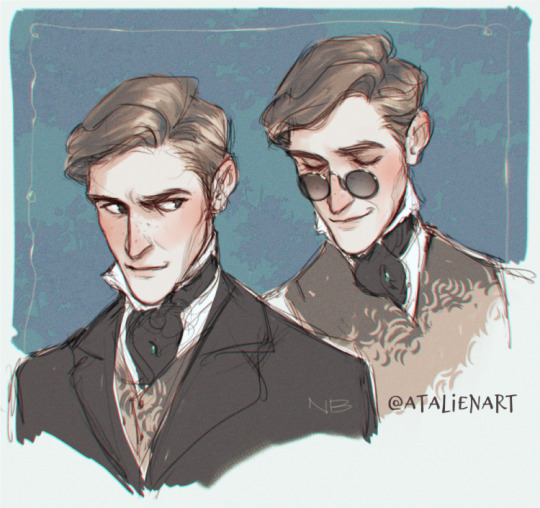
"Wysoki i szczupły, K. był kwintesencją elegancji, od nienagannego ubioru, szytego według najnowszej mody, przez starannie ułożone, piaskowe włosy, po sposób w jaki się trzymał."
#my art#nat tries to write#oc#original character#rough translation from translator xD#Tall and slender K. was the epitome of elegance#from his impeccable fashionable attire to his neatly styled sandy hair to the way he held himself.#I wanted to introduce you to my new character#let's call him Mr K. for now#I spent entirely too much time trying to draw this guy the way he should look like and tbh I'm not sure I'm 100% happy with the result#he kinda looks... so freaking generic like “every pretty dude ever” and he shouldn't idk#though in the story he is pretty#he probably looks too young here too but whatever#maybe I'll change his design later#anyway#if you've seen one of my boys you've probably seen them all#enjoy
486 notes
·
View notes
Text

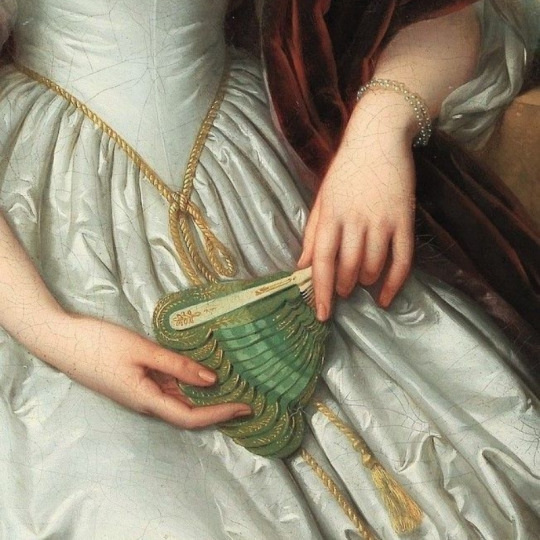

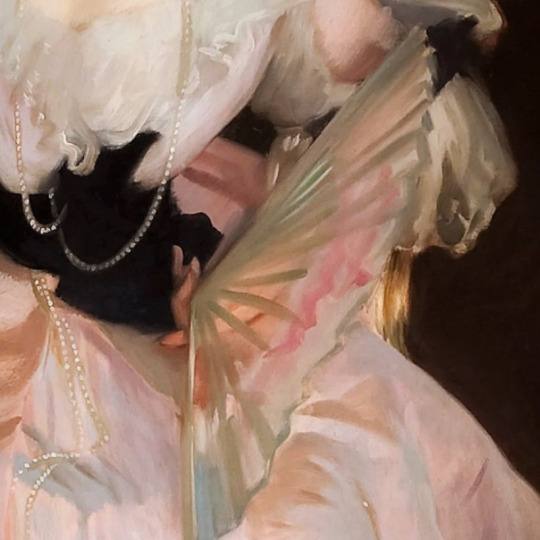


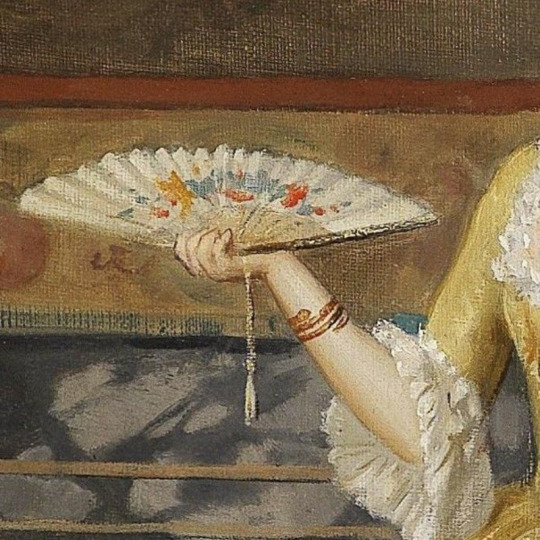


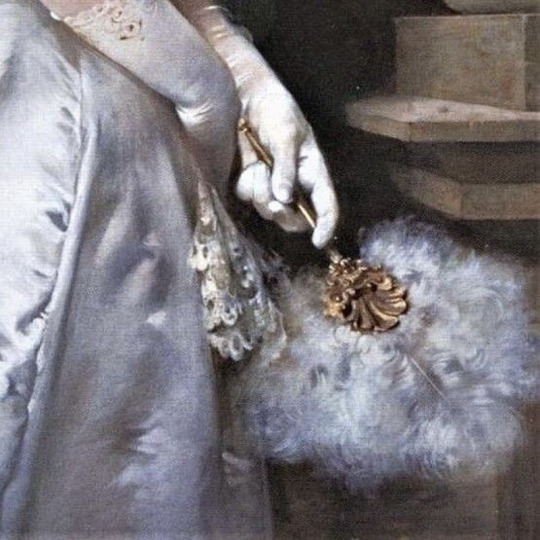



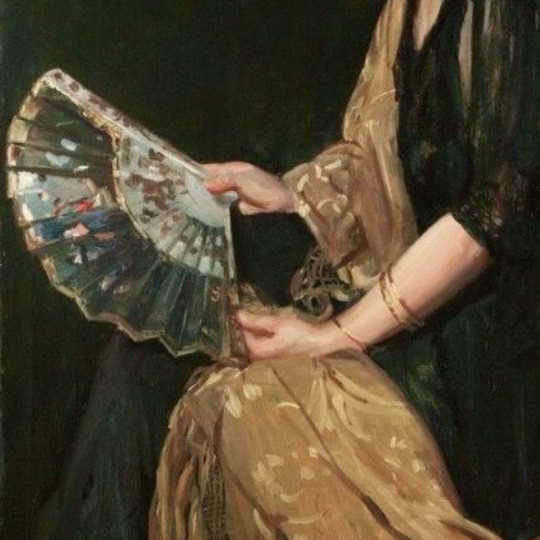

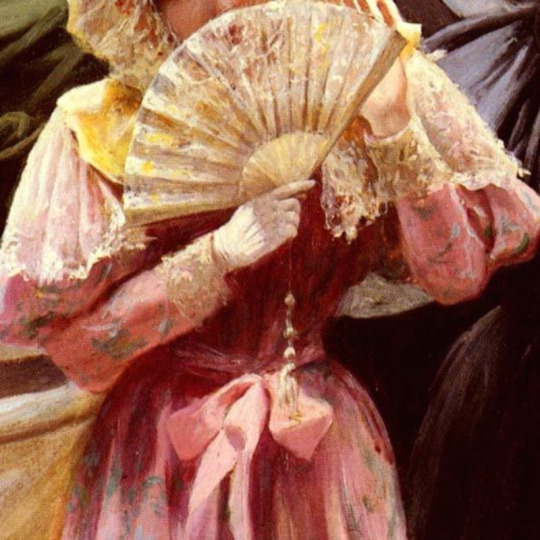


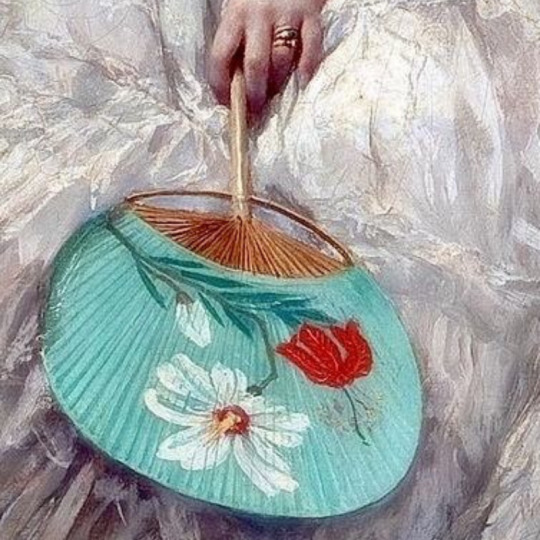
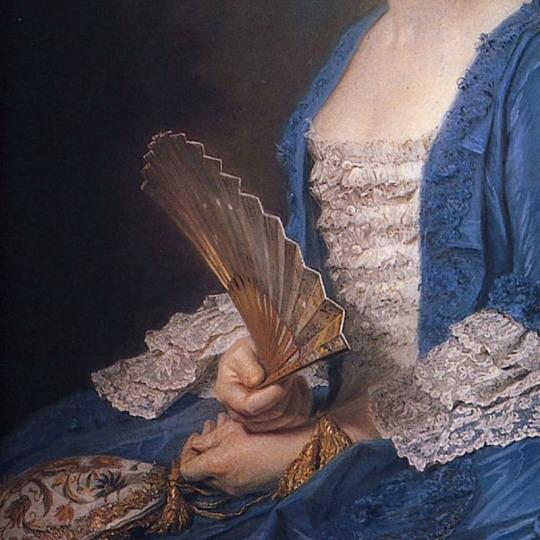


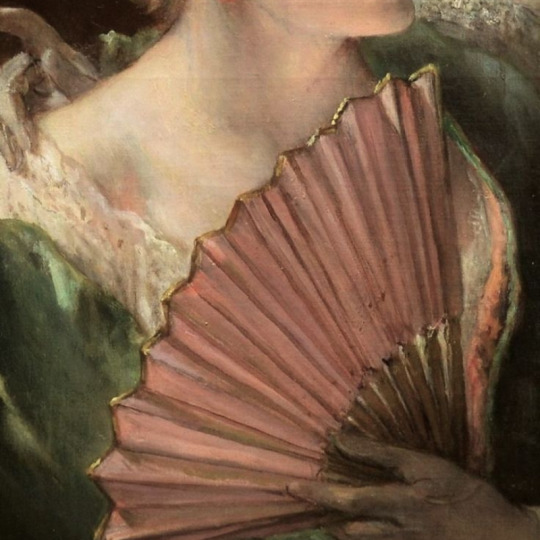
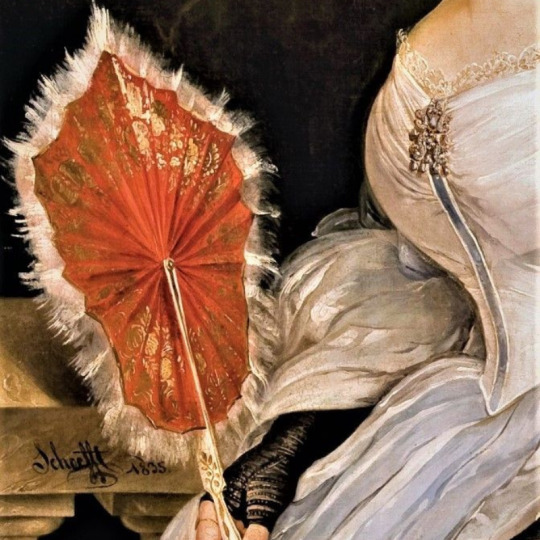

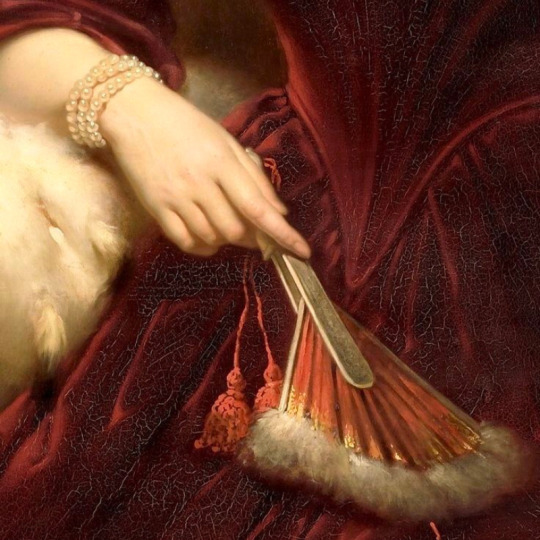

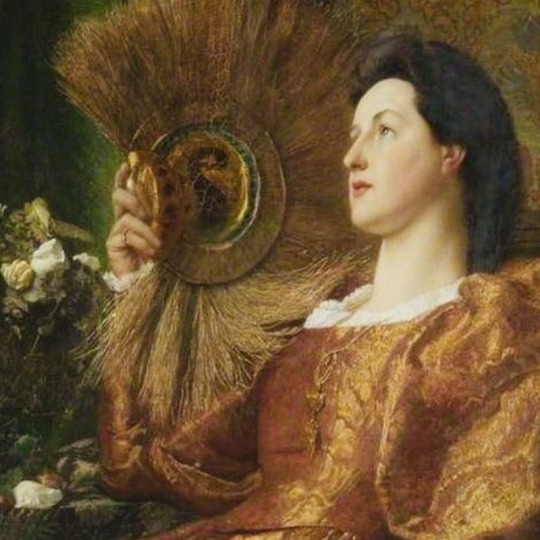
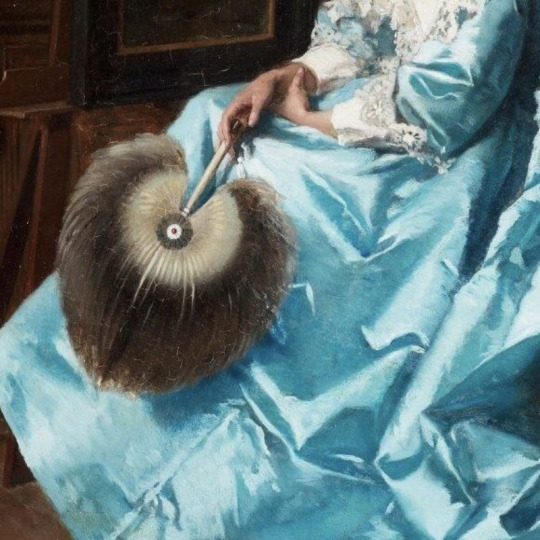
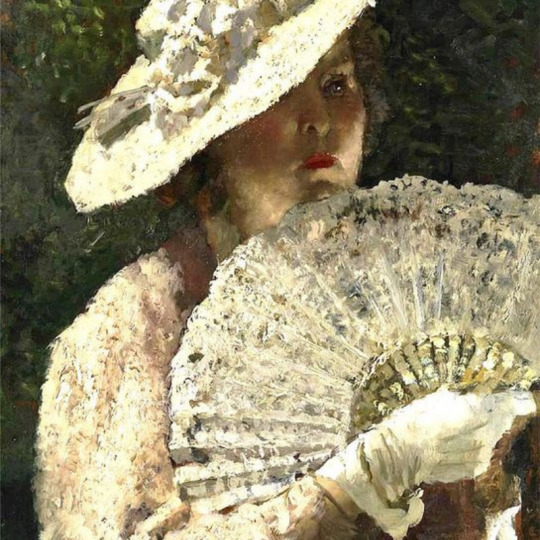
fans + art
#artist is i think l gerard#this post is going be kinda hard to find some of the paintings and artist because they are cut off but im trying my best#artist i cannot find#i love another by abraham solomon#adele meyer mrs carl meyer by john singer sargent#cant find this artist#cant find artist nor painting#artist is franz von persoglia#i think this is anselm feuerbach#princess elena pavolovna belosselsky-belozersky by christina robertson#cant find artist or painting name#portrait of madame fanny leontine gronkowska by barbara mackay#artist is frederick warren freer#princess mathilde bonaparte by edouard-louis dubufe#the japanese fan by elizabeth reynolds finley#the painting is called blue dress but i cant find the artist#leaving the ball opera by pedro pierre ribera#elegant lady with a fan by ludwig knaus#idle thoughts by auguste toulmouche#can't find artist or painting#marie madeleine mazade by maurice quentin de la tour#cant find anything on this one#portrait of mrs. francis stanton blake by julius le blanc stewart#artist is jean francois portaels#artist is august schoefft#mary frances mackenzie by frank dicksee#artist is jan adam kruseman#can't find anything on this#artist is sir william blake richmond#artist is jean de la hoese
228 notes
·
View notes
Text
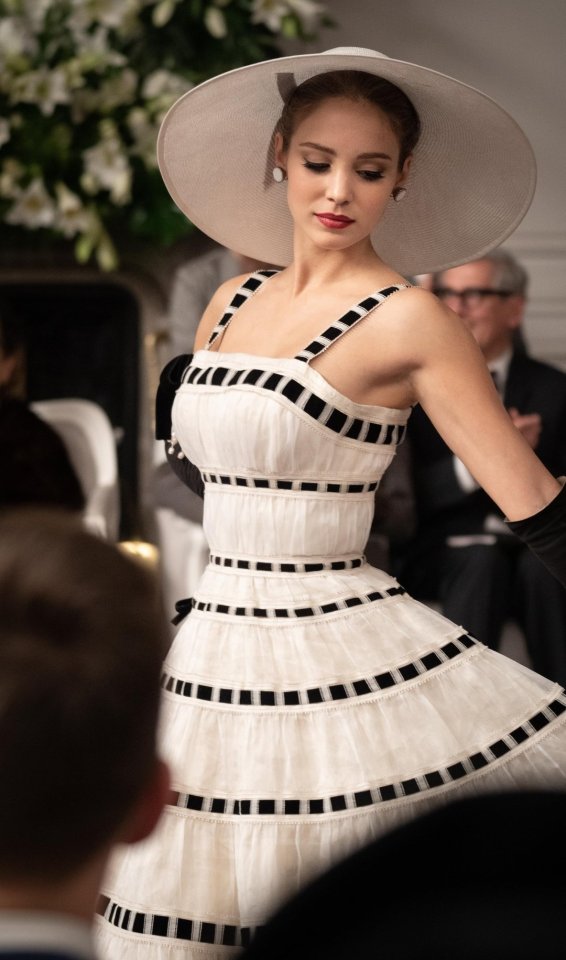
endless alba 53/∞
#alba baptista#warrior nun#mrs harris goes to paris#ava silva#she's so elegant in this movie#i need to re-watch it#anyway#some alba for your sunday <3#i hope you (and she) are having good ones
181 notes
·
View notes
Text



#been dying for quality spy x fam content for weeks and endo Never disappoints T‿T#the whole chapter was so cute 😭#and it's so sweet that mr. henderson's elegance all started because of her :')#and i didn't expect martha to be the one who had feelings for the the other.#i thought it was gonna be henderson and that they had their little romance going well until war happened or time & distance separated them#well it was sad that martha's love was unrequited and that last chapter :(#i wonder if the two of them still think about what happened :') hopefully it'll be becky to nudge them both to at least get closure#if they haven't already that is#i love the chapter very much. hoping to see more of martha and Henderson soon 😩#spy x family spoilers#spy x family#sxf#spy x family chapter 97#sxf 97
76 notes
·
View notes
Text





Merchant Maids At Your Service~ ✨
Live Flagbearer Reaction:

#art#fanart#arknights#shitpost#maid outfit#arknights lee#mr nothing#arknights jaye#swire the elegant wit#saileach#arknights myrtle#elysium arknights#arknights wanqing
29 notes
·
View notes
Text








#deltarune#rouxls kaard#lesser dad#lancer deltarune#mr society#mr elegance#not canon#comic#scribble comic
84 notes
·
View notes
Text
Mr. Elegance has unique dialogue if you talk to Mr. Society before going to Cyber World.
76 notes
·
View notes
Text
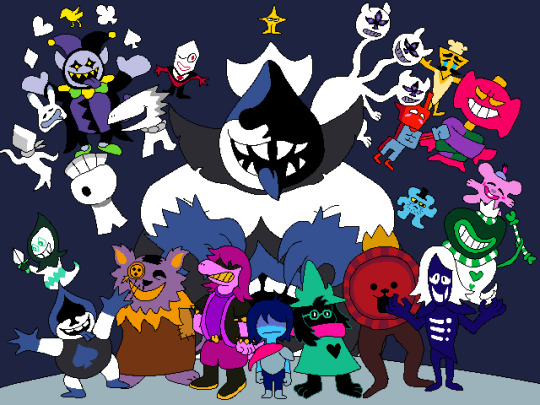
NOW! SHOW YOURSELF! DELTARUNE!
#deltarune#kris dreemurr#susie deltarune#ralsei#lancer#rouxls kaard#k round#seam deltarune#jevil#rudinn#hathy#clover deltarune#pippins#jigsawry#rabbick#bloxer#ponman#jigsaw joe#mr elegance#mr society#malius#topchef#the original starwalker
84 notes
·
View notes
Text
With Halloween coming up, I realize that I've never posted about my ACGAS Halloween Monster AU, so let's change that!
The name is pretty self-explanatory, but to explain the au, it's an au where everyone (at the very least, the Skeldale Family and a few friends) are halloween monsters! By halloween monsters, I mean monsters that you'd commonly see on Halloween decorations or in Halloween specials for shows. (Mainly so I don't have to be like, "Well actually, Siegfried could be a centaur because of his love of horses, but Tristan doesn't have that same, like, well-known love for horses so centaur doesn't super work for him, but it'd be weird if they weren't the same type of monster since they're brothers" and because I don't want this to be all angsty)
So let's get to which monster each character is!
James - Frankenstein
Pretty classic/popular halloween monster, and I think a classic/popular monster is fitting for our main character.
His mom is just as (over)attached and (over)protective as in canon, maybe even more so in this au, since in this au, she's the one that sewed him up and brought him to life. I can see there being moments throughout the seasons of characters having to stitch some of James' limbs back onto him (mainly Mrs. H in s1 and s2, then from s3 and onwards the responsibility probably transfers to Helen because she's his wife (I think she can sew, I don't remember.))
Siegfried & Tristan - Werewolves
There are three main things that factor into this decision: 1) they're vets and thus deal with animals, including dogs, a lot 2) they're brothers that live together and wolves usually stay in packs and 3) they both have facial hair and werewolves are (usually) hairy (in their human form).
Siegfried is already the "leader of the pack" in canon, but in this au, it's more direct/pertinent. After all, one of a wolf packs' responsibilities is to look after the wolf pups, like how it's been Siegfried's responsibility to look after his little brother after their parents died.
I can see Tristan uses his werewolf abilities, like superhuman strength, to impress girls along with using puppy dog eyes to get what he wants from/to convince Mrs. Hall and his brother not to punish him.
Mrs. Hall - Witch
While not exactly a monster per se, witches are often lumped together with werewolves and frankensteins when it comes to Halloween monsters, so I'm counting it. Besides Mrs. Hall's medicines are already called witches brews so it feels like a no-brainer.
In this au, along with cooking in the kitchen, she could also be making potions. There'd probably be a big cauldron that she stirs in the kitchen.
I like the idea of the hats she wears out all being replaced by different witch hats as well.
Helen - Scarecrow
This is where I stretch the definition, while not a typical Halloween monster, scarecrows are associated with autumn and harvests and stuff like that. Scarecrows can also easily be spooky monsters(, like a scarecrow in a fun little corn maze coming to life and hunting down people in the maze).
Overall, I just find the idea of the farmers (Jenny and Mr. Alderson would also be scarecrows) being scarecrows funny and cute. It's also fun to me that the like main couple in the show in this au are both sewn-up creatures.
Carmody - Vampire
Someone had to be a vampire. It's like *the* (classic (halloween)) monster. I see Carmody coming from a rich family, and vampires are typically the rich aristocrat monster. (And for the farmody shippers: werewolf x vampire is like a classic ship au thingy)
I saw this idea in a post about a hospital staffed entirely by monsters, but there's this idea of vampires being able to smell like bloodborne diseases, and I really like it, so I'm choosing to believe that Carmody would be able to do that and thus give the practice an edge. Also, I don't know if Carmody would be nocturnal like most vampires or not, but if he is, he'd probably be taking a lot more nightcalls, which would also give the practice an edge.
I think Carmody's bat form would be very cute, too.
#acgas#acgas 2020#all creatures great and small#all creatures great and small 2020#james herriot#siegfried farnon#tristan farnon#audrey hall#mrs hall#helen herriot#helen alderson herriot#richard carmody#I have a few other monster hcs for background characters#like margot sebright saunders is a very elegant werecat#and mrs pumphrey is a really old vampire#(the pandhis are also monsters I just don't know what kind)#(florence is probably a mix of two types of monsters)#(honestly probably like a witch and something else)#halloween monster au#monster au
17 notes
·
View notes
Text
Drawing deltarune characters in alphabetical order


Mr. Elegance & Mr. Society
12 notes
·
View notes
Text
The Elegant Mr. Arthur
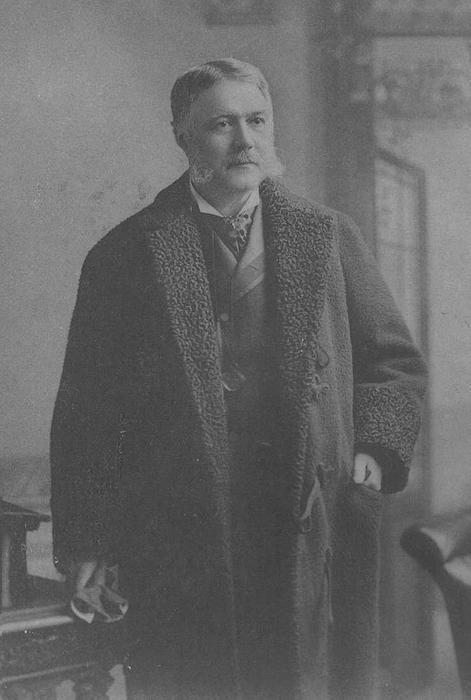
It was about two hours after midnight on September 20, 1881, and not unusual for the resident of 123 Lexington Avenue in New York City to be awake at such a late hour or to have plenty of guests. In fact, he preferred to keep late hours, entertaining friends deep into the night with late-night dinner, drinks, and endless conversation. Yet, on this night, 123 Lexington Avenue was somber and the mood was grave. Just a few hours earlier -- at 11:30 PM -- a messenger knocked on the door of Vice President Chester Alan Arthur's Manhattan brownstone and handed Arthur a telegram. Surrounded by a few friends and colleagues, Arthur read that President James Garfield, just 49 years old and in office for almost exactly 200 days, had died at a beach cottage rough 60 miles away, in Elberon, New Jersey. Turning to his friends in his sitting room, Arthur said, "I hope -- my God, I do hope it is a mistake."
On July 2nd, President Garfield was shot twice and seriously wounded by Charles Guiteau as he walked through the Baltimore & Potomac Railroad Station in Washington, D.C. with Secretary of State James G. Blaine and Secretary of War Robert Todd Lincoln (son of Abraham Lincoln), en route to a speaking engagement at his alma mater, Williams College in Massachusetts. Guiteau was a disgruntled, disturbed, and delusional office-seeker who had been pleading for an appointment as consul to Paris despite an absence of diplomatic or political experience and a complete lack of qualifications. Hounding Garfield throughout the early months of an Administration that had just begun on March 4, 1881, Guiteau's constant harassment of the new President finally resulted in Secretary Blaine ordering Guiteau to never return to the White House again. Guiteau felt that he had been entitled to some office, particularly a high-profile ambassadorship, and was terribly upset that Garfield and his Cabinet members refused to consider his requests. Blaine's order to stay away drove Guiteau to purchase an ivory-handled .44 British Bulldog revolver (specifically chosen because Guiteau felt that particular firearm would look good in a museum) and he began stalking Garfield throughout Washington before finally shooting him in the rail station two days before Independence Day 1881. As police arrested him, Guiteau shouted, "I am a Stalwart of the Stalwarts...Arthur is President now!"
But, Arthur wasn't President; not yet at least. Garfield was a physically robust man and relatively young in comparison to most Presidents. Although one bullet had lodged in Garfield's spine, the other bullet grazed his arm and caused no significant damage. While it appeared that he was gravely immediately following the shooting, Garfield's vital signs soon started to improve and the American people began to get their hopes up about a full recovery. A vigil of sorts was underway as President Garfield convalesced in the White House, and his doctors issued regular bulletins updating his condition. Garfield's doctors also poked and prodded with unsterilized instruments and dirty fingers to attempt to locate the bullet still inside of the President's body. Had they left it alone, Garfield almost certainly would have survived; his wounds were significantly less dangerous than those survived by Ronald Reagan 100 years later. However, the unnecessary poking and prodding resulted in a serious infection that ravaged Garfield's body, weakened his heart, and left the muscular, 215-pound President emaciated and weighing less than 135 pounds. After fighting for his life in the sweltering summer heat of Washington, on September 6th it was finally decided to transport Garfield to a cottage on the Jersey Shore in hopes that he could benefit from the fresh ocean air. Sadly, it was too late. The infections were accompanied by blood poisoning and pneumonia, among other ailments. On September 19th, at 10:35 PM, Garfield suffered a massive heart attack and was pronounced dead. In the 79 days since he had been shot, Garfield had lost over 80 pounds and the 49-year-old President's dark brown hair and beard had turned a ghastly white color. An hour later, the messenger arrived at 123 Lexington Avenue.
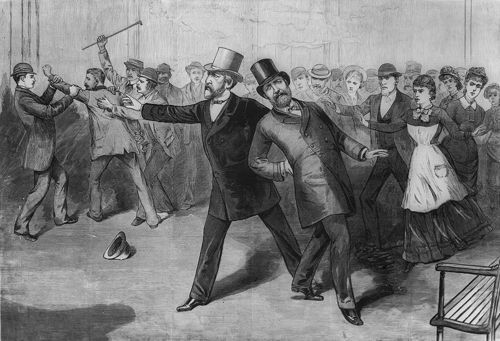
•••
The Vice Presidency was a stretch. Chet Arthur of New York as Vice President? When offered the Republican Vice Presidential nomination by James Garfield in 1880, Chester Arthur was urged by his political mentor, the leader of the Stalwart branch of the Republican Party, Senator Roscoe Conkling of New York, to decline the appointment. Arthur, a man who had never spent a day in Congress or been elected to any office at any level, couldn't turn down such an unexpected opportunity. He accepted the nomination and was elected alongside Garfield in November 1880, but most of the country (rightfully) saw Arthur as the poster boy for a machine politician elevated by the spoils system. The Vice Presidency was certainly a stretch for Chester Arthur, but President of the United States? That was an almost frightening thought to a nation still recovering from Civil War and desperately seeking civil service reform, especially now that a disgruntled office-seeker has assassinated the President. The idea of Arthur as President left a lot of Americans worried -- some because Arthur's political background was as the powerful and somewhat shady Collector of the Port of New York, appointed during the controversial Administration of President Ulysses S. Grant and eventually fired by President Rutherford B. Hayes during a housecleaning of corrupt institutions; and some because James Garfield's murderer had claimed to be a Stalwart and, by his own words, insinuated that Garfield's shooting might be a conspiracy on behalf of Arthur's faction of the divided Republican Party.
Chester Arthur was a creature of the era known as the "Gilded Age" and was the symbolic mascot for the widespread corruption of the 1870's due to his position at the Port of New York. Born in Vermont in 1829, Arthur was the son of a preacher and grew up mostly in upstate New York, graduated from Schenectady's Union College in 1848, briefly taught school was studying law, and was admitted to the bar in 1854. As his law practice grew in the 1850's, Arthur immersed himself in New York Republican politics yet never ran for office. A political appointee to the New York State Militia, he found himself serving during the Civil War and his superb organizational skills led to quick promotions all the way to quartermaster general in 1862, a position which carried the rank of brigadier. As a political appointee to the militia, however, Arthur served at the pleasure of the Governor of New York and was forced to resign in 1862 when a Democratic Governor took office. Returning to New York City, Arthur resumed his law practice and political gamesmanship. More appointments came his way as he supported Republican candidates throughout the state and worked on national campaigns such as President Lincoln's 1864 bid for re-election and Ulysses S. Grant's 1868 Presidential campaign.
In 1871, President Grant appointed Arthur as Collector of customs at the Port of New York, which gave Arthur responsibility for about 75% of the nation's customs duties and was one of the most powerful patronage positions available in the United States government. Arthur used his office to efficiently raise money for Republican campaigns and candidates, supporting President Grant's 1872 re-election campaign by seeking contributions from his employees at the customhouse. In 1876, Arthur championed his political mentor, Roscoe Conkling, for the Republican Presidential nomination, but supported Rutherford B. Hayes in the general election, once again using the employees at the customhouse to help raise money to finance the successful Republican campaign. However, once Hayes was elected, the new President made it clear that he was serious about civil service reform and that meant reforming Arthur's customhouse, too. In 1877, Arthur testified before the Jay Commission, which was formed to investigate charges of corruption and eventually recommended that President Hayes reduce the workforce of the customhouse and eliminate the corrupt elements that had worked there for so long. Due to Arthur's longtime support of the Republican Party, President Hayes offered him an appointment as consul in Paris in order to quietly remove him from the Port of New York. When Arthur refused the appointment, the President fired him and Arthur resumed his law practice in New York City (Hayes intended to replace Arthur with Theodore Roosevelt, Sr. -- father of the future President -- but Conkling felt insulted by Hayes's termination of Arthur and worked to kill Roosevelt's appointment during his Senate confirmation ).
When Arthur headed to the 1880 Republican National Convention at the Interstate Exposition Building in Chicago, it was as a New York delegate supporting the aspirations of former President Ulysses S. Grant who was coming out of retirement to seek an unprecedented third term. However, neither of the front-runners for the nomination -- Grant and Senator James G. Blaine of Maine -- could capture enough votes from delegates to clinch the nomination. After thirty-five ballots, Blaine and another prospective candidate, John Sherman of Ohio, threw their support behind a dark horse candidate -- Ohio Congressman James A. Garfield. On the next ballot, Garfield clinched the nomination and reached out to the opposing wing of the Republican Party for his Vice Presidential choice. The first choice, Levi P. Morton of New York (who would later serve as President Benjamin Harrison's Vice President) declined Garfield's offer, and Arthur -- who had never previously held an elective office -- excitedly accepted, much to the chagrin of his angry political mentor, Roscoe Conkling. Not confident in Garfield's chances for election, Conkling told Arthur, "You should drop it as you would a red hot shot from the forge." Arthur replied, "There is something else to be said," and Conkling asked in disbelief, "What, sir, you think of accepting?" Despite the complaints and anger of Conkling, Arthur told him, "The office of Vice President is a greater honor than I have ever dreamed of attaining. I shall accept. In a calmer moment you will look at this differently."
Following the election, Arthur prepared to settle into the quiet role of Vice President during the 19th Century. The Vice President of the United States has only one real Constitutional responsibility -- to preside over the Senate, and even that responsibility is normally delegated to Senators who rotate as presiding officer almost daily. The powerful or even influential American Vice Presidency is a fairly recent evolution, not even 50 years old. While some Vice Presidents were relied upon for advice or counsel or given larger duties than others, most Vice Presidents were so far removed from the Executive Branch that they were not only kept out of the decision-making process but also kept in the dark about certain information. For example, when President Franklin D. Roosevelt died towards the end of World War II in April 1945 and was succeeded by his Vice President, Harry S. Truman, the new President Truman had to be quickly briefed about the existence of the Manhattan Project to develop atomic weaponry. The first Vice President to have an office in the White House was Walter Mondale and that didn't occur until 1977, so in 1881, a Vice President was expected to preside over the Senate on special occasions, cast a tie-breaking vote when necessary, and be available to take the oath of office if the President happened to die or resign.
Like most 19th Century Vice Presidents, Chester Arthur didn't even spend much time in Washington, and he was returning to his regular home in New York City on July 2, 1881 when he stepped off a steamship with Roscoe Conkling and was told that President Garfield had been shot. In fact, the first message that Arthur received erroneously reported that Garfield was already dead and at the request of Garfield's Cabinet, the stunned Vice President immediately returned to Washington, D.C. to proceed with the next steps necessary for maintaining the continuity of government. When Arthur arrived in Washington, President Garfield's condition had improved and his recovery continued to show signs of promise as the Vice President and the nation prayed for him and held vigil throughout the summer. Shaken by rumors that he and his "Stalwart" wing of the Republican Party conspired to assassinate Garfield, Arthur returned home to New York City, hesitant to invite criticism that his continued presence in Washington was merely an eager deathwatch so that he could grab power.
Garfield clung to life for eighty excruciating days with doctors probing him in an effort to remove the bullet in his body, causing infections and leaving the President suffering from blood poisoning which led him to hallucinate at times. The Navy helped rig together an early form of air conditioning in Garfield's White House sickroom in order to give him relief from Washington's stifling summer conditions. When Garfield was taken by train to New Jersey in early-September, it was clear to many that the long vigil was nearly over. More infections set in, along with pneumonia and painful spasms of angina. When the messenger arrived at 123 Lexington Avenue just before midnight on September 20, 1881 to inform Arthur that President Garfield had died just 60 miles away, the new President wasn't surprised, but he also wasn't quite prepared. The nation worried about the lifetime political operative stepping into the position vacated by the promising President assassinated before he could enact the civil service reforms promised in his Inaugural Address. What would Arthur -- the quintessential patronage politician -- do as President? Nobody knew, but Chester Alan Arthur had an idea.
•••
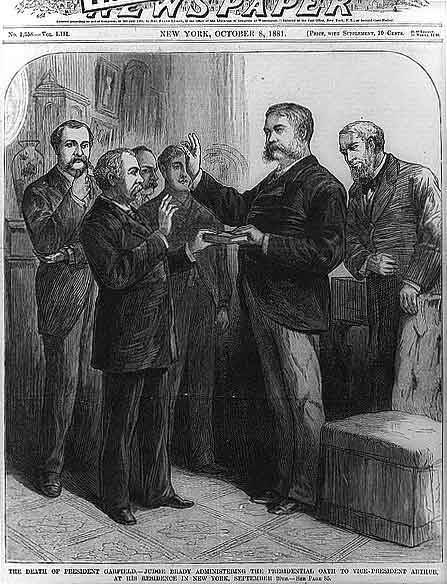
It was fitting that Arthur was surrounded by friends when he took the oath of office at his home in Manhattan at 2:15 AM on September 20, 1881. Arthur's beautiful wife, Nell, died of pneumonia in January 1880 and he was inconsolable for months, regretting for the rest of the life the fact that she never saw his election as Vice President or ascendancy to the Presidency. People who knew Arthur stated that he clearly never fully recovered from her death, and that as a "deeply emotional...romantic person," it was no surprise that he ordered that fresh flowers were placed before her portrait in the White House every day while he was President.
Chester Arthur had a lot of friends. That's what happens when you control as many patronage positions as Arthur controlled for as long as Arthur controlled them. But it wasn't just his political position that gained him friends. Arthur was a great storyteller, a man who loved to hunt and fish, kind, easy-going, charming, graceful, and smooth. During his life he was nicknamed "Elegant Arthur" and is considered one of the most stylish of Presidents. Photographs of Presidents from the 19th Century show us men no different than statues. They dressed the same, they looked the same, and when portrayed in the black and white photos of the time, we feel no differently when we see their pictures than when we see a slab of marble carved in their image. Arthur leaps out of his photographs, however. He was a very large man for his era, standing 6'2" and weighing around 220 pounds during his Presidency. Large muttonchops connected to a bushy mustache and his close-cropped, wavy brown hair seemed to pull back his forehead and place more emphasis on expressive black eyes that easily reflected his moods. While it seems that most Presidents of the 19th Century wore the same boring black suit and black tie like a uniform, Arthur's ties are patterned, his jewelry is visible, collars are crisp, handkerchiefs are folded creatively, and his lapels shine as if they were polished along with his shoes. We see photographs of Arthur in fashionable overcoats, a wide variety of hats, and he employed a personal valet who helped the President change clothes for every occasion and multiple times a day -- he was said to have over 80 pairs of pants.
Most apparent of all is that Arthur was a gentleman -- an interesting man with superb social skills and fastidious manners. Even as one of the top operatives in New York's Republican political machine of the corrupt 1870's, he was nicknamed the "Gentleman Boss." As President, he brought entertainment back to the White House -- something that had been missing on a large scale since before the Civil War twenty years earlier. One of his recent predecessors, Rutherford B. Hayes, was one of the few critics of this development, stating that there was "nothing like it before in the Executive Mansion -- liquor, snobbery, and worse." Arthur also redecorated the White House, hiring Louis Comfort Tiffany to help with the design. To help raise money for the redecoration, Arthur basically held a White House yard sale. On the lawn of the mansion, twenty-four wagons full of history (including a pair of Abraham Lincoln's pants that were left behind in a closet) were sold to citizens. To some, the items were priceless; to President Arthur, they were ugly and a man like Chester Arthur did not live in an ugly home. Several weeks after Garfield died, Arthur got his first look at his new home and quickly stated, "I will not live in a house like this." He didn't end up moving into the White House until three months into his Presidency.
•••
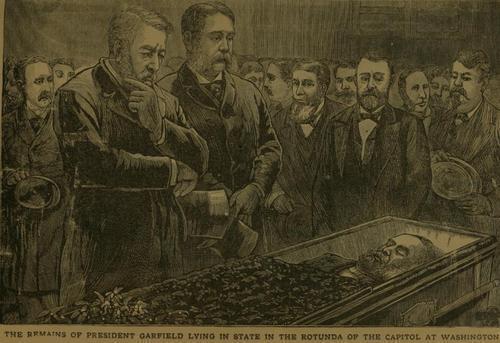
After taking the oath of office at home in Manhattan in the early hours of September 20, 1881, now-President Arthur proceeded to Washington, D.C., stopping in Long Branch, New Jersey to pay respects to the late President Garfield and his grieving family. Once Arthur succeeded to the Presidency upon Garfield's death, there was no Vice President, no president pro tempore of the Senate, and no Speaker of the House because Congress had not elected its leadership yet, thus, there was no Constitutional line of succession. If something had happened to Arthur at that moment, the United States would have faced an unprecedented Constitutional crisis. As his first act as President, Arthur immediately called the Senate into session in order to select their leadership positions and place someone in the line of succession. Upon arriving in Washington, Attorney General Wayne MacVeagh suggested that Arthur take a second oath of office and he did so at the U.S. Capitol on September 22nd in the presence of Garfield's Cabinet, members of Congress, Supreme Court Justices, and former Presidents Grant and Hayes.
Americans worried about the former machine politician's integrity were transformed quickly as Chester Arthur underwent somewhat of a transformation himself. Widely considered a lapdog of New York's Roscoe Conkling, Arthur broke ranks with the party boss and pushed for the same civil service reform championed by James Garfield prior to the assassination. Arthur's former associates in the New York Republican Party were disappointed when he declined their requests for political favors. One former colleague sadly reported, "He isn't 'Chet' Arthur anymore. He's the President." Arthur found that the transformation was almost automatic and out of his control, noting that "Since I came here I have learned that Chester A. Arthur is one man and the President of the United States is another." His old benefactor, Conkling, was one critic of the new President, complaining "I have but one annoyance with the Administration of President Arthur and that is, in contrast with it, the Administration of Hayes becomes respectable, if not heroic." Arthur signed the Pendleton Act in 1883 which created a modern civil service system and eliminated the spoils system that had long dominated American politics. The reform, which Conkling called "snivel service" was the final break between the longtime friends and colleagues.
To the American people, the great surprise of the Arthur Administration was the fact that it was clean, honest, and efficient. Arthur helped lift the gloomy moods that had shadowed Washington through the Civil War, Lincoln's assassination, Andrew Johnson's Impeachment, Reconstruction, the corruption of the Gilded Age, and Garfield's assassination. His popularity rose throughout his term and most critics focused on his lavish entertainment or the fact that he was notoriously late for meetings and seemed bored or lethargic at times. He often procrastinated -- as a White House clerk once said, "President Arthur never did today what he could put off until tomorrow." Still, most Americans were happy with President Arthur and echoed the thoughts of Mark Twain who said, "I am but one in 55 million; still, in the opinion of those one-fifty-five-millionth of the country's population, it would be hard to better President Arthur's Administration."
He was bored, though. President Arthur didn't like being President. He enjoyed the entertaining dinners that he could throw and loved public events or ceremonies that allowed him to meet the people of the United States, but the desk work was tedious and he wasn't interested in policy. Arthur stayed up late and seemed to vacation often, which perplexed many people because it was said that he was constantly exhausted. What they didn't know was that from almost the time he became President, Chester Arthur was dying. In 1882, he was diagnosed with Bright's disease, a fatal kidney ailment at the time. Despite reports that he was suffering from the disease, Arthur hid it from the public, desperately protecting his privacy, as always. Arthur's distaste for the Presidency probably stemmed in part from depression triggered by the Bright's disease. At times, Arthur suffered from debilitating illness and it was always covered with a story about the President catching a cold during a fishing trip or spending too much time in the sun while hunting. In a letter to his son Alan in 1883, the President confided, "I have been so ill that I have hardly been able to dispose of the...business before me."
Despite his popularity, Republican leaders opposed Arthur's nomination as President in his own right in 1884. The man who opposed it most, however, was the President himself, who stated "I do not want to be re-elected." Not only was he disinterested in a second term, but he knew very well that there was a possibility he might not even survive to the end of his current term. He did, and after attending the inauguration of his successor, Grover Cleveland, on March 4, 1885, Arthur returned home to New York City where his health rapidly declined. The former President was aware that he was dying and made plans for a relatively quiet retirement, deciding to practice law, but doing very little work due to his health. When asked about his future, Arthur said, "There doesn't seem anything for an ex-President to do but to go out in the country and raise big pumpkins." On November 16, 1886, Arthur suffered a stroke that paralyzed his left side. Gravely ill, he called his son to his bedside the day before his death and had all of his public and private papers stuffed into trash cans and burned. On November 18, 1886, the 57-year-old former President died in the same place he became President just five years earlier, 123 Lexington Avenue in New York City. After a quiet funeral at the Church of Heavenly Rest on Fifth Avenue in New York, Arthur's remains were buried next to his beloved wife at Rural Cemetery in Albany, New York.
•••
When President Arthur had many of his personal papers burned prior to his death, he eliminated one of the best sources of information for future historians. With a thin resume and a fairly uneventful Presidency, there wasn't much public information about his career, either. This leaves us with very little to remember Chester Alan Arthur by. Research on his life -- particularly his personal life -- is difficult, and Arthur would have appreciated that. During his Presidency, leaders of the temperance movement called on Arthur and urged him to follow the non-alcoholic lifestyle led by President Hayes and his teetotaler wife, who was known as "Lemonade Lucy."
Arthur's response: "Madam, I may be President of the United States, but my private life is nobody's damn business."
And so it isn't.
#History#Presidents#Chester Arthur#Chester A. Arthur#Chester Alan Arthur#President Arthur#Arthur Administration#Presidential History#The Elegant Mr. Arthur#James A. Garfield#President Garfield#Assassination of James Garfield#Garfield Assassination#Charles Guiteau#Inauguration of Chester Arthur#Presidential Assassinations#Presidential Succession#Roscoe Conkling#Gilded Age#Civil Service Reform#Pendleton Act#1880 Election#1884 Election#Politics#Political History#Gentleman Boss#Presidential Personalities#Presidency#Vice Presidents#Vice President Arthur
26 notes
·
View notes
Photo


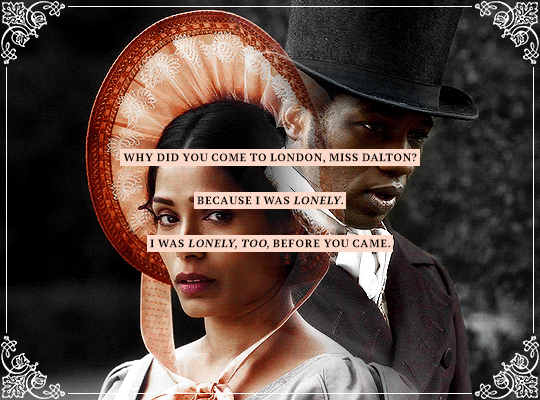
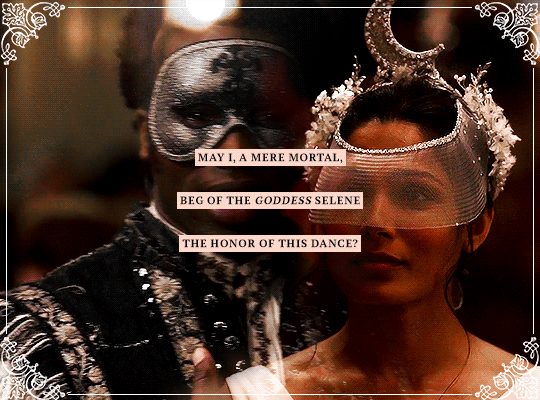
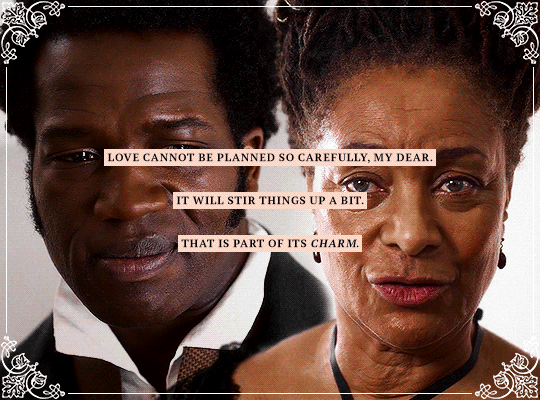
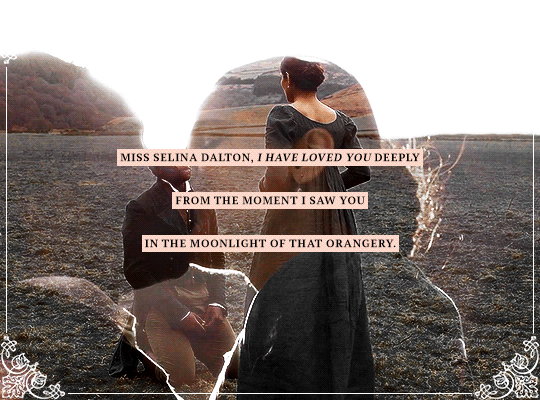
MR. MALCOLM'S LIST + FAVORITE QUOTES (insp)
(requested by anonymous)
#mr malcolm’s list#mr malcolms list#mrmalcolmslistedit#mmledit#perioddramasource#perioddramaedit#onlyperioddramas#diversehistorical#gifshistorical#usercharithra#usergif#cinematv#fyeahmovies#userfilm#*mygifs#/i was gonna add funny quotes like the famous 'malcolm thats blinking'#/but it didnt fit the aesthetic i was going for#/i was trying to replicate the elegant (?) vibe of the insp#/also i sure like to make my life complicated#/bc i saw that blue tinted orangery scene#/and decided to make a coloring focusing on the red hues#/lmao#/ok rant over
342 notes
·
View notes
Text
"You are such an interesting person! I adore your personality!"
Thank you, I've learned that from the best ladies in this universe <3

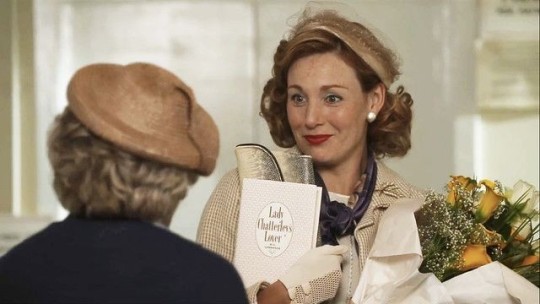
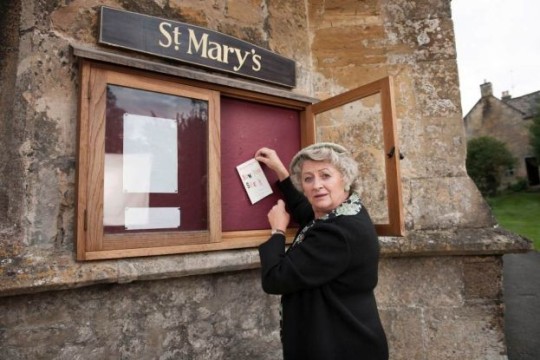
#classy like Mrs. McCarthy#Elegant like lady Felicia#Sassy like Bunty#father brown#bbc father brown#mrs mccarthy#lady felicia#bunty windermere
36 notes
·
View notes
